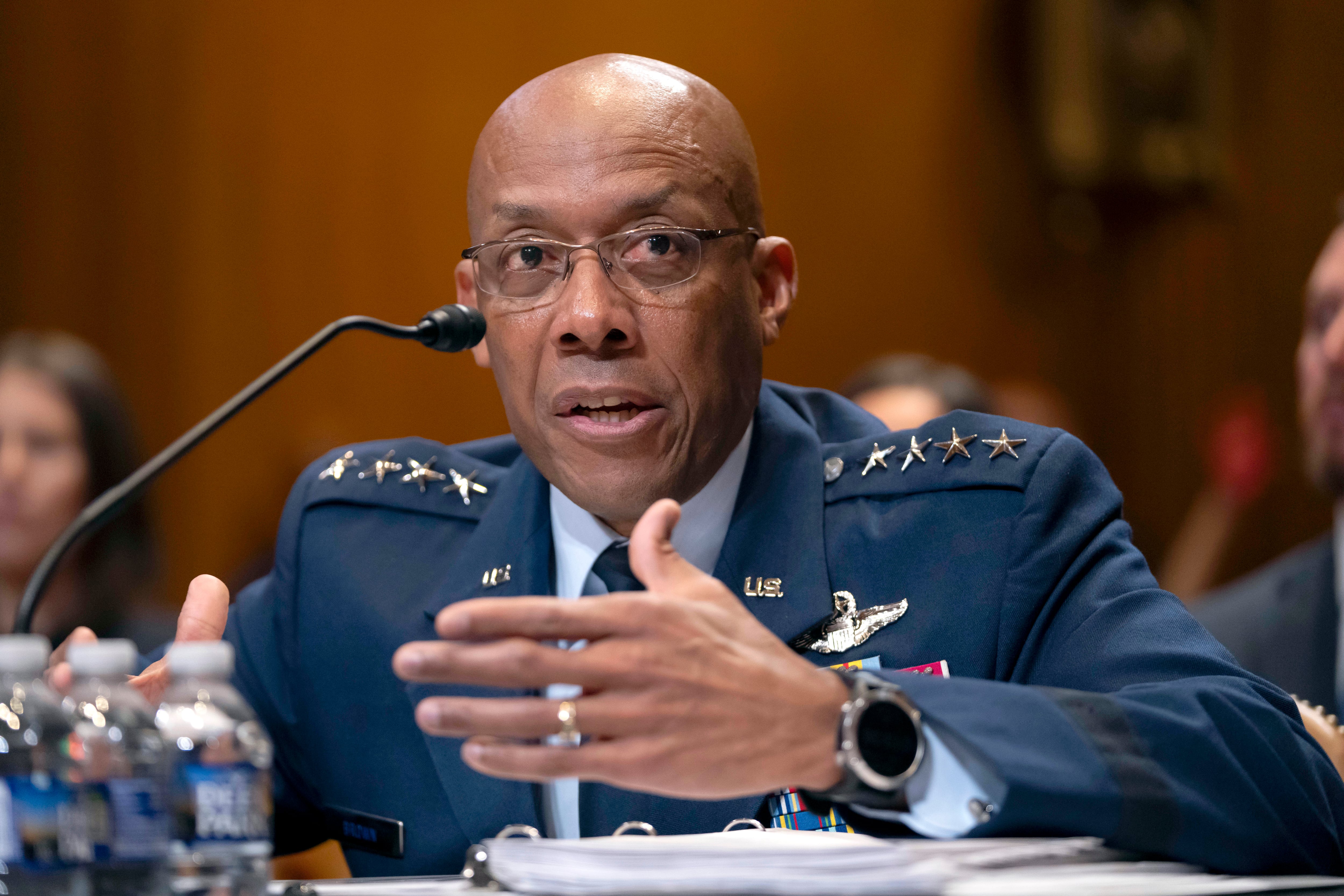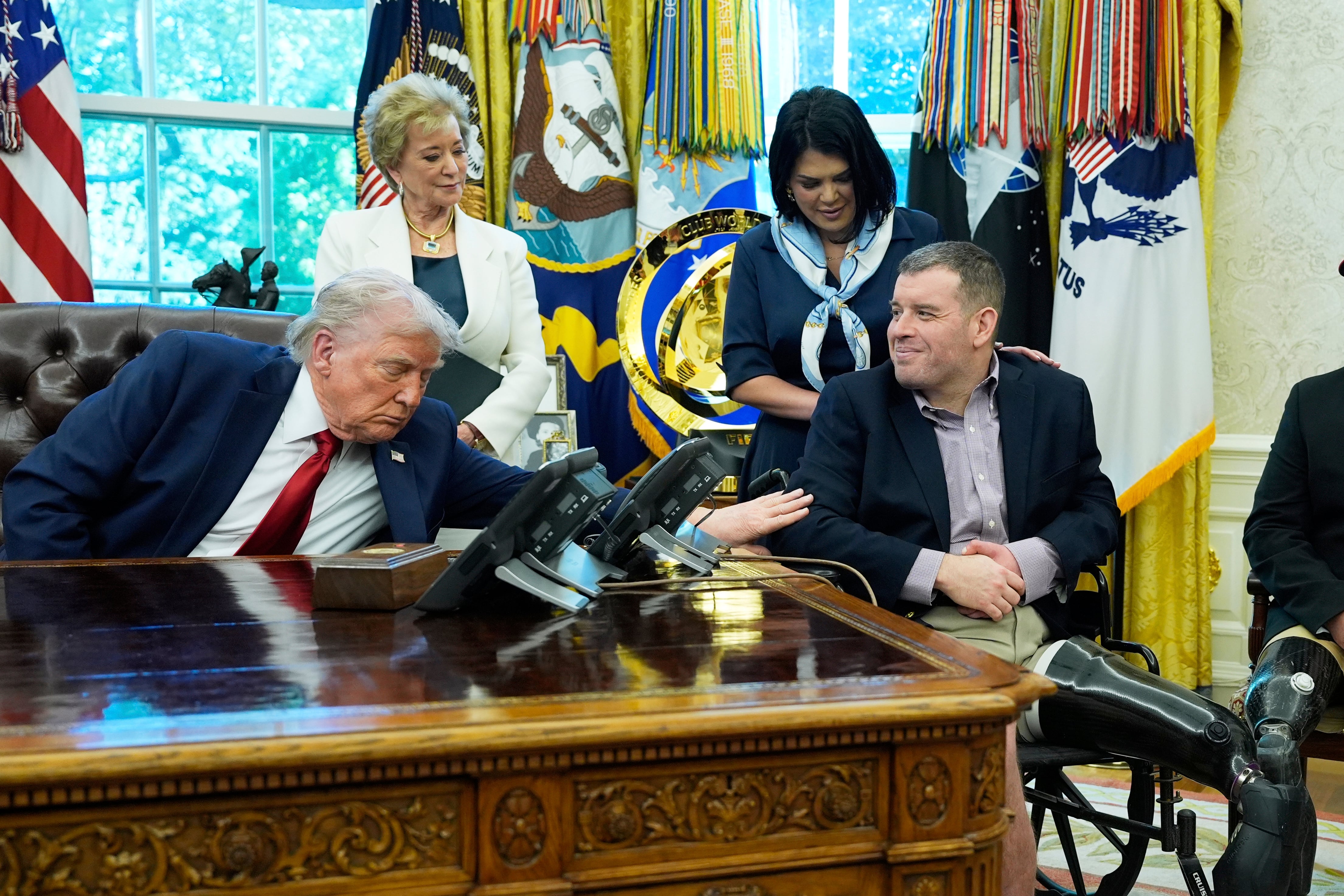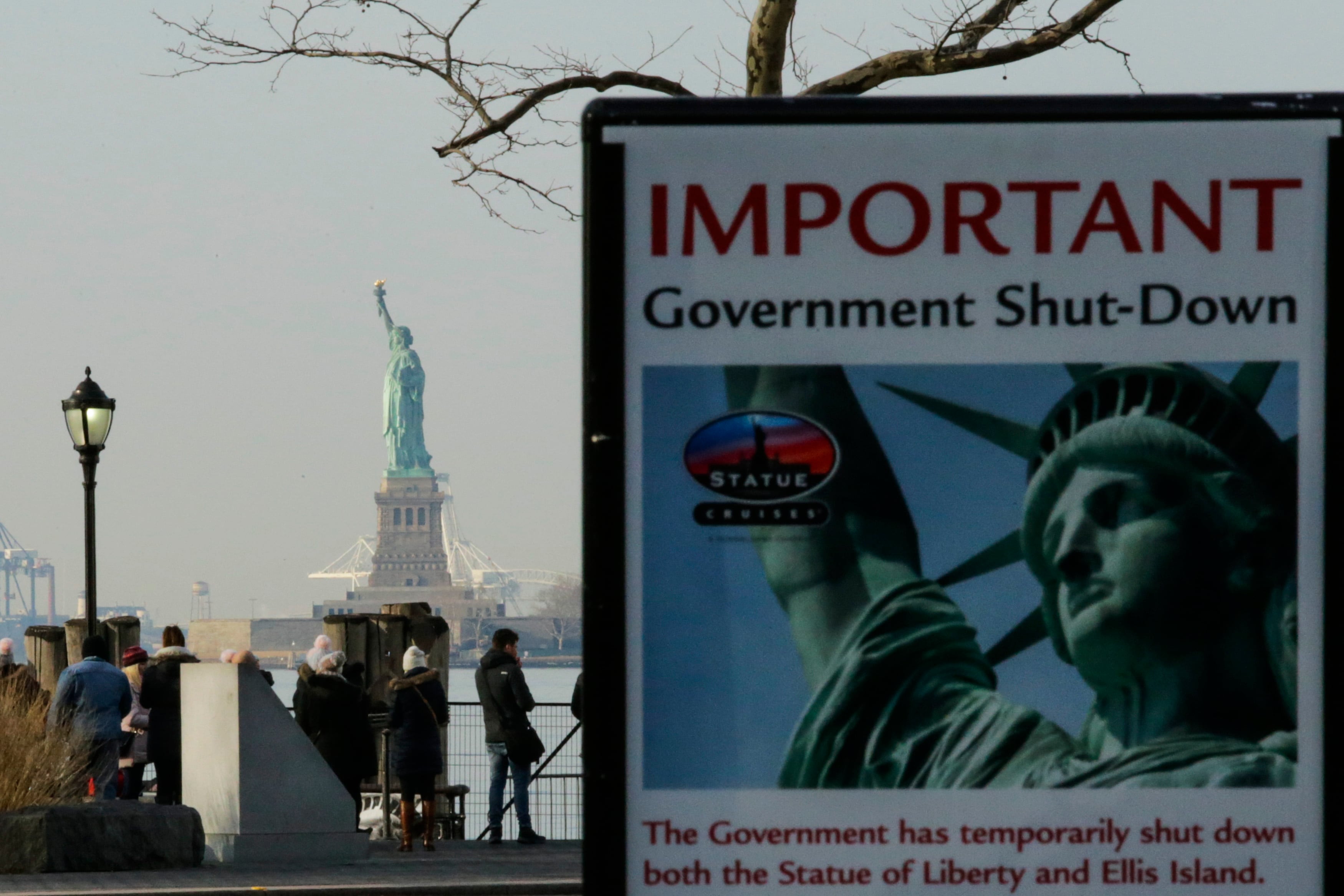President Donald Trump on Feb. 21 fired Chairman of the Joint Chiefs of Staff Gen. CQ Brown, Chief of Naval Operations Adm. Lisa Franchetti and Air Force Vice Chief of Staff Gen. Jim Slife.
Defense Secretary Pete Hegseth said in a statement that Trump plans to nominate retired Air Force Lt. Gen. Dan Caine, who joined the venture capital firm Shield Capital in January, as the nation’s next chairman of the Joint Chiefs.
“General Caine embodies the warfighter ethos and is exactly the leader we need to meet the moment,” Hegseth said. “I look forward to working with him.”
No replacements for Franchetti — the first woman to serve as a service chief — or Slife were announced. Hegseth said he is requesting nominations to fill their roles.
Franchetti and Slife “have had distinguished careers,” Hegseth said. “We thank them for their service and dedication to our country.”
Franchetti made history in 2023 when she was confirmed as the Navy’s 33rd chief of naval operations, the first woman to hold the service’s top officer position and the first to serve on the Joint Chiefs of Staff.
Commissioned in 1985, Franchetti became a surface warfare officer in 1989, entering the fleet at a time when women were barred from serving aboard combatant ships and aircraft. Congress lifted that ban in 1993, and Franchetti would go on to command two carrier strike groups, Carrier Strike Group 15 and Carrier Strike Group 9, U.S. Naval Forces Korea and Destroyer Squadron 21, among other at-sea and ashore assignments.

As commander of U.S. 6th Fleet, Franchetti oversaw the submarine John Warner’s 2018 Tomahawk missile strike on Syrian chemical weapons facilities – the first such strike by a Virginia-class submarine.
Before becoming CNO, Franchetti served as the Navy’s vice chief of naval operations. Her CNO confirmation in 2023 was stalled as part of a larger nominations blockade by Sen. Tommy Tuberville, R-Ala., over the Defense Department’s abortion access policy.
In September, Franchetti unveiled the Navy’s latest navigation plan, or NAVPLAN, detailing how the service will prepare for a potential future conflict with China by 2027 — the year President Xi Jinping has directed his military to invade Taiwan.
Franchetti is the second female top military officer Trump has dismissed during his second term, following his removal of then-Coast Guard Commandant Adm. Linda Fagan in January.
Vice Chief of Naval Operations Adm. Jim Kilby will perform the CNO’s duties until a successor is appointed, according to reports.
Hegseth, meanwhile, also requested nominations for the Army, Navy and Air Force judge advocates general, indicating they too have been fired.
Since Trump’s reelection, rumors have swirled in Washington about Brown’s precarious position and possible firing.
Brown, who was the second Black chairman and the first Black officer to serve as a service chief, became a target for some commentators and lawmakers for his openness to diversity initiatives.
In his statement, Hegseth said Brown “has served with distinction in a career spanning four decades of honorable service. I have come to know him as a thoughtful adviser and salute him for his distinguished service to our country.”
The tenor of that statement differed from Hegseth’s remarks on Brown in his book, The War on Warriors, and in interviews before Hegseth was nominated as defense secretary.
“You think CQ Brown will think intuitively about external threats and internal readiness?” Hegseth wrote. “No chance. He built his generalship dutifully pursuing the radical positions of left-wing politicians, who in turn rewarded him with promotions.”
Brown was a decorated F-16 pilot, who counted 130 hours in combat among his 3,000 flight hours, and served in multiple top leadership roles before taking charge of the Air Force.
As deputy chief for U.S. Central Command, Brown directed the air war against the Islamic State militant group. Brown also previously served as Pacific Air Forces commander, and as Air Force chief of staff, a role in which he focused on transforming the service to prepare for a possible war against China.

His position appeared more secure after he was seen talking with President-elect Trump at the Army-Navy game in December. On his first day as defense secretary, Hegseth entered the building side-by-side with Brown and said he looked forward to working with him.
But this week, a list of generals who could be fired began circulating on Capitol Hill, including Brown and Franchetti. Lawmakers of both parties sent Hegseth a letter earlier Friday asking for more transparency on officer removals to keep the process apolitical.
Sen. Jack Reed of Rhode Island, the ranking Democrat on the Senate Armed Services Committee, said he is “troubled by the nature of these dismissals.”
“This appears to be part of a broader, premeditated campaign by President Trump and Secretary Hegseth to purge talented officers for politically charged reasons,” Reed said, “which would undermine the professionalism of our military and send a chilling message through the ranks.
“America has the strongest, most capable military in the world,” he continued. “But firing uniformed leaders as a type of political loyalty test, or for reasons relating to diversity and gender that have nothing to do with performance, erodes the trust and professionalism that our service members require to achieve their missions. ... A professional, apolitical military that is subordinate to the civilian government and supportive of the Constitution rather than a political party is essential to the survival of our democracy.”
The policy institute Center for American Progress blasted the firings, calling them “a deliberate effort to target senior professional military officers” and replace them with Trump loyalists.
“Few public servants have more honor, integrity and courage than the military officials that Trump fired today,” Rudy de Leon, a senior fellow at CAP and former deputy secretary of defense under President Bill Clinton, said in a statement.
“This action disrupts the chain of command, erodes military readiness, and damages morale throughout the ranks,” de Leon added. “It sets a dangerous precedent that could lead to further politicization of the military and pressure senior nonpartisan military officers to put politics ahead of their duty.”
Brown’s firing, which comes less than a year and a half into his tenure as chairman, marks a swift downfall in the fortunes of the nation’s top military officer, who was widely respected in the Pentagon and by lawmakers and officials of both parties.
Trump nominated Brown to become Air Force chief of staff in May 2020. Weeks later, George Floyd was murdered by Minneapolis police, which sparked a national wave of outrage and activism surrounding racial justice.
Brown made a video that summer in which he spoke about his experiences as a Black officer in the U.S. military. Making such a public statement, which was widely circulated, could have endangered his nomination as Air Force chief of staff, but the Senate soon confirmed him 98-0.
Former President Joe Biden in 2023 picked Brown to be chairman of the Joint Chiefs, and Brown was again confirmed unanimously by the Senate.
But during Brown’s nomination process, there were signs that his stance on diversity was becoming a political vulnerability.
In a July 2023 nomination hearing, senators of both parties largely praised Brown for his experience and leadership ability. Brown emphasized the importance of keeping the military apolitical in that hearing, and pledged to remain nonpartisan as chairman.
During that hearing, Sen. Eric Schmitt, R-Mo., opened up his questioning of Brown by asking, “Do we have too many white officers in the Air Force?”
Schmitt blasted Brown for signing on to a memo the previous year, along with other Air Force and Space Force officials, that set aspirational demographic goals for the applicant pool for officers. That memo also called for Air Education and Training Command and the U.S. Air Force Academy to create diversity and inclusion outreach plans to meet those applicant goals.
Schmitt falsely characterized the memo as saying the Air Force should have an officer corps that is 67.5% white, which he said would be a 9% reduction of white officers.
Brown noted that the memo was on application goals, and did not set a quota for how many members of each race should be in the Air Force. He added that efforts to improve diversity in the Air Force are important, so airmen of all backgrounds can have the chance to excel.
“All they want is a fair opportunity to perform,” Brown said. “And by providing that fair opportunity, they do not want to be advantaged or disadvantaged or discounted based on their background.”
Brown said he held that same view for himself as he became a fighter pilot, instructor and commandant of the Air Force Weapons School.
“I didn’t want to be the best African American F-16 pilot,” Brown said in that hearing. “I wanted to be the best F-16 pilot.”
Stephen Losey is the air warfare reporter for Defense News. He previously covered leadership and personnel issues at Air Force Times, and the Pentagon, special operations and air warfare at Military.com. He has traveled to the Middle East to cover U.S. Air Force operations.
Beth Sullivan is an editor for Military Times. Previously, she worked as a staff reporter for The Daily Memphian and as an assistant editor at The Austin Chronicle.





